Revolution means smashing the state

Far from being a radical slogan out of touch with reality, the notion of the need to “smash the state” represents the realistic starting point for thinking about the task of the transition to socialism.
The state
What is a state? A state is an organized body of people with a “monopoly on certain crucial social functions,” namely making social rules and enforcing them through “legitimate” violence.1It is a combination of a bureaucracy—departments of state, treasury, interior—and armed forces like the military, FBI, CIA, Border Patrol, local police, and prisons. In most capitalist states, a minute proportion of these individuals are elected by society at large. That portion of the state—Congress and the president in the United States—is often called the government. Although those individuals who are voted in do play a role, steering and making adjustments to the course of the activity, policy, diplomacy, and business of the state, the purpose and destination themselves are built into the state’s very fabric.
The modern capitalist state, as described in a famous line from The Communist Manifesto, is “but a committee for managing the common affairs of the whole bourgeoisie.” But what are those common affairs? Primarily, these include ensuring the smooth functioning of capital accumulation for the capitalist class of any given country. And at the core of this capacity for management of capitalist order is a “special body of armed men,” to use an oft-quoted phrase of Lenin’s.2These two elements: the monopoly on overwhelming violence (and importantly, the threat thereof) and the “management of capitalist interests” are the operating principles of the capitalist state in general.
The class character of the state
It is important to note that the “committee” referred to by Marx and Engels is not a literal committee of the ruling capitalists.3To say this is not to minimize the massive influence that the capitalist class exerts—the system runs on their campaign contributions, lobbying, and the revolving door of actual members of the ruling class who often serve as state managers. But even so, it can’t be said that the state is a simple tool or instrument that is immediately directed by all the billionaires with their top hats and twirly mustaches sitting around a table in a darkened room. Such a conception is what is called the “instrumentalist theory of the state,” and some crude Marxist analyses make this error.
The instrumentalist theory—as pointed out by radical sociologist Fred Block—misses two key features of the state.4 The first is that even though it does serve as a tool for class rule, it must appear as if it doesn’t. The fact that the bourgeois state “appears” as a neutral intermediary between social groups and classes allows it to play an important ideological function. The “neutral” appearance of the capitalist state is rooted in capitalist social relations. Because in most circumstances force (aside from threat of starvation) isn’t needed to compel workers to go to work and produce, political power is institutionally separate from the “private sphere” of exploitation. Instead, it takes the form of a “public” and “impersonal” power, standing above classes defined in production. 5
But secondly, and more importantly, the general interests of capital are not always shared or known by the capitalists themselves. Capitalists as a class are not class conscious. Jeff Bezos, for example, is guided by his own best interest in making the most profit from his little slice of the economic pie, and this shapes his inability to know the best interest of the system as a whole.
As capitalism is system-driven by the processes of exchanges on the market, capitalists are in competition with each other. Competition between them proceeds simultaneously alongside the strong solidarity they have with each other when their collective interests are threatened by the working class. It is why Marx and Engels referred to them as a “hostile band of brothers.”6That collaboration and necessary competition is dramatically sharper in the case of imperialism—competition between capitalists of different states.
Because of the competitive and crisis-prone nature of capitalism, sometimes the state may have to act against the private interest of this or that capitalist with policies like price controls, restrictions on exports and the like, or even to aid the working class to quell class conflict (as in the case of implementing the New Deal out of fear of insurrection), or to ensure social reproduction (like making sure that there is a supply of workers able to carry out work).7
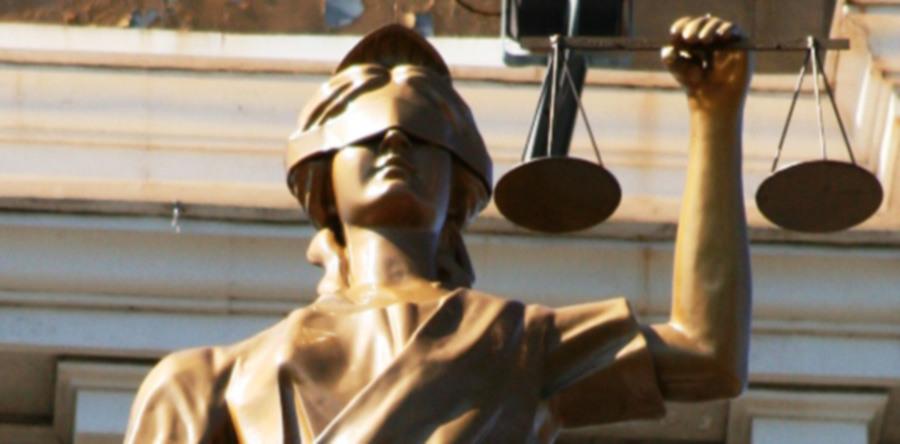
To the extent that the capitalist class does become consciously a class “for itself,” it’s often as it’s organized by the state. Capitalists organize themselves as a class with the aid of idea-generating para-state institutions like parties, think tanks, and NGOs; non-state institutions like universities or elite media also contribute.8In the U.S. context, the two major parties each have a share in the U.S. state, for policy forming purposes, they’re integrated with the capitalist class directly through lobbying, social connections, and financial flows. Parties are thus amalgamators of sectional interests, horse-traders among those interests, and practical reconcilers of internal conflicts for the class. As parties go, the two U.S. parties are not strongly differentiated by their policies, but the parties (or party fractions, like the neo-cons of the 1990s and 2000s) are available to become vehicles for policy alternatives when the ruling class needs such alternatives.
As such, the state is the organized means by which the capitalist class formulates and pursues its interests as a class, including by arbitrating conflicts within the class. In still other words: the state is the way that members of the ruling class gain collective agency as a class.
State managers play a central role in this expression. Yet they may also develop their own special interests. Some reformists use this critique of crude instrumentalism to suggest that since there are divisions in a capitalist class, and since the state is not simply their tool, working people can simply grab hold of the state and use it for our purposes to carry out a socialist transition. I will return to this point, but one thing to note is that this position just replicates the view of the state as an instrument, this time to be wielded from our side, as opposed to the structural analysis that shows why the state necessarily functions to serve capitalists’ interests.9
States rely on tax revenue and borrowing to pay for their functioning and functionaries. Both of these depend on a growing economy, profitability, and a business climate that promotes investment.10Without the accumulation of profit by a national business class, tax revenue is harder to come by and the potential for borrowing from private capitalist financial institutions is at risk. In the cutthroat world of the market where capitalists are in competition, and competition breeds crisis, an institution like the state, with a degree of independence, works to facilitate a “market order” that keeps business going amid the chaos.11
State managers are conscious of their mandate to foster the expanded reproduction of national capital: national bank chairs, treasury secretaries, career undersecretaries of all sorts, and many elected officials know what their job is, and they know that they can be replaced if they fail.
That role for the state becomes all the more pronounced during inevitable periods of economic crisis. When capitalism is in a bust cycle, the job of state managers is to work to restart the capitalist economic engine and facilitate capitalist investment, as this is what largely determines the overall level of economic activity.12In almost all circumstances, therefore, the state has to make pro-business decisions—which often carry with them austerity for the working class. No direct stimulus will make capitalists invest, expand, hire or start new ventures. Even with the most extreme measures, such as the quantitative easing that moves interest rates into the negative, the state remains dependent upon the subjective decisions of those who own capital.
The need of state managers to create a favorable business climate means that it is reliant on capitalist investment, making the threat of capital flight a weapon in the hands of a dissatisfied capitalist class. This continual threat especially haunts attempts at reform or nationalization of the economy because capital can literally take their money and assets and leave the country. The economic shockwaves thereby caused can be paralyzing for any social democratic reform project. 13
The chaotic competition of capitalism scales out beyond national borders into the realm of relations among different states.As Colin Barker noted: “The world of capitalism is characterized, not by the superimposition of ‘a state’ but rather by a condition of political ‘anarchy’. Only anarchy is not here linked with a condition of statelessness, but by a condition of having many states.” 14Capitalists of different states interrelate and interact through trade, commerce, and international supply lines as well as through competition for markets, natural resources, and geopolitical position. On this international stage, states function outwardly to create a favorable business climate and jockey for position for their national capitalist class. The system of capitalism does not just create “the state” but a system of multiple states. “There will be many capitalist states,” wrote Neil Davidson, “as long as there are many capitals . . . The trajectory of geoeconomic competition ultimately ends in geopolitical rivalry.”15And with geopolitical rivalry come the forces of imperialism, armed forces, and war that lurk behind the tentative bonds of diplomacy.
States thus serve capital by working to maintain an orderly market and positive climate for business, using any means necessary to do so. They pursue this project outwardly on behalf of their national capitalist class against other states, and inwardly against challenges or disruptions by their own subjects. 16
The repressive character of the state
For the state, creating and maintaining “market order” essentially requires an organization of violent force. The fact that it reserves for itself the monopoly of “legitimate” force is the primary anchor for its position of authority. Even though states have taken on more pervasive roles and institutional layers since the times of the writings of Marx, Engels, and Lenin, the centrality of the capitalist state’s repressive or policing function remains unchanged.
The contemporary state certainly has more layers of bureaucracy and complexity than earlier iterations. Additionally, the state has taken on some welfare functions added in the postwar period. These changes were due largely to the anomaly of the postwar economic boom that remains unparalleled in the history of capitalism, which allowed the state more leeway to cede gains to workers.17Even with these changes, however, the existential feature of contemporary capitalist states is still the special bodies of armed men.

Today, 2 million people in the United States are locked behind bars, constituting the largest number of incarcerated people in the world—both numerically and as a proportion of national population. Over a thousand people are murdered by the police every year, with many thousands more brutalized. There were only twelve days in 2022 when the cops didn’t kill someone, the deadliest year on record for police violence. 18
And of course, the carceral violence this country imposes is racialized to its core, with anti-Black racism being a central operating and targeting mechanism. Concentration camps along the borders lock up over forty thousand individuals fleeing circumstances in their country that are often related to American political and economic meddling, dividing families and facilitating endemic cases of sexual assault. Any notion of personal privacy is obsolete as the National Security Agency can access almost all our data, and the growing interconnection between Big Tech and the state only secures this stranglehold.19The police state acts beyond the border. The U.S. is currently operating in 40 percent of the world’s countries, maintains military bases in seventy countries, and stations combat troops in fourteen countries, with another seven being bombed by planes and drones and waging economic war via sanctions on another handful of countries.20
The centrality of this violence to the state apparatus is demonstrated concretely in numbers of personnel and money. The budgets—which of course come from workers’ tax dollars—on both the federal and local level still devote huge amounts of cash for “armed men.” On the federal level, over half of all discretionary spending goes to the Department of Defense. On the local level, roughly a third of most major municipal budgets are devoted to police. Over 80 billion dollars are spent annually on prisons nationally, and in Cook County, the budget for “public safety” amounts to 1.4 billion dollars, or 17 percent of the total budget, the second largest budget item.
Relative personnel sizes further illustrate what this really means for the state. The Department of Labor, for example, has 17,000 employees, while the Department of Education has 4,000 employees. In comparison there are 12,000 congressional lobbyists. To consider another esteemed national institution, Applebees has 75,000 employees nationally. Meanwhile, out of a nonmilitary federal workforce is 2 million, and 700,000 (35 percent) of those are civilians working for the Department of Defense.21When you add military personnel, the U.S. Department of Defense is the largest employer in the world, with 3.2 million people on its payroll.22There are also 37,000 employed by the Federal Bureau of Prisons; 60,000 members of the Border Patrol; and 89,000 in the FBI, CIA, and NSA. A conservative estimate (not including civilian contractors) puts 52 percent of total federal employees as members of a body of armed men. In Chicago, roughly 40 percent of the city’s employees are cops.
From raw numbers alone, the description of the state as a special body of armed men still figures centrally. Even while its repressive violence is sometimes less visible in more stable capitalist democracies, the monopoly of violent force to ensure its rule remains present and vital. The state is not a neutral social tool, but a special organization that developed historically for one sole purpose: to facilitate profit for the capitalist class and violently defend them against any challenge by working people. As described by Marx, it is a “national war engine of capital against labor.”23So let’s talk about its destruction.
What does it mean to “smash the state”?
The phrase was popularized by Lenin’s work State and Revolution, but it comes from Marx and the lessons that he and Engels gleaned from the Paris Commune. In 1871 the workers of Paris, in the midst of a massive political crisis and war, rose up and took control of the city and engaged in an experiment of democratic self-rule for roughly three months. Rather than laying hold of the preexisting political structures, they replaced them with radically re-created structures from below in attempts not just to change the governmental personnel but to remake society anew.
As the events of Paris were unfolding, Marx wrote in a letter to a comrade that what was “essential for real peoples’ revolution” was not “to transfer the bureaucratic-military machine from one hand to another but to smash it.”24Marx wrote elsewhere that the most useful thing the state could do would be to commit suicide.25Engels opined that he looked forward to the day when the state would sit in the museum of antiquity next to other historically obsolete tools.26Both were quite clear that the transformation to a socialist society would require the abolition of the capitalist state.
The most fundamental reason why such a far-reaching conclusion is necessary is the fact that socialism—a system that organizes society for each according to their needs and by each according to their ability—is a democratic project. Indeed, it is the only possible actual democracy.
Under capitalist democracy, politics is almost completely divorced from daily life. Some of us have the right to vote in federal and local electoral races, but we do so in an atomized form, via secret ballot and in most cases disconnected from political discussion or actual collective decision-making. And of course even this vote is rigged via voter disenfranchisement that excludes 4.6 million people or 1 out of every 19 African Americans, a matrix of voter suppression measures, gerrymandering, restrictions of the two-party system, and an electoral college built during the era of slavery the machinations of which have resulted in two out of the last four presidents being elected without the majority of votes.27In a system where the candidate who spent the most money wins congressional elections 93 percent of the time, and where the predominance of funding comes from wealthy individual donors and corporate PACS, the horizon of choice is established by the rich and powerful well before some of us have the opportunity to check a box or not.28
Then, even if we vote someone into office, we have no real mandate over their activity. On the federal level there is no way to recall someone and exert control. This is commonly countered by the notion of “holding politicians accountable” after their election. But in even a basic democracy, you shouldn’t have to pressure someone to do the thing that you voted for them to do. A politician’s “influence” or their relative susceptibility to pressure are the central conceptual coordinates of cleverer-than-thou electoral strategists, but these only show how undemocratic and unrepresentative our present “democracy” really is. The trail of broken promises and the conventional wisdom that views politicians as being unreliable is based on the concrete fact that politicians can do whatever they choose to do once in office. A political perspective premised on lobbying someone to do what they ostensibly have been put in office to do already accepts that the role of the people is only to provide pressure, rather than to democratically control the direction of society.
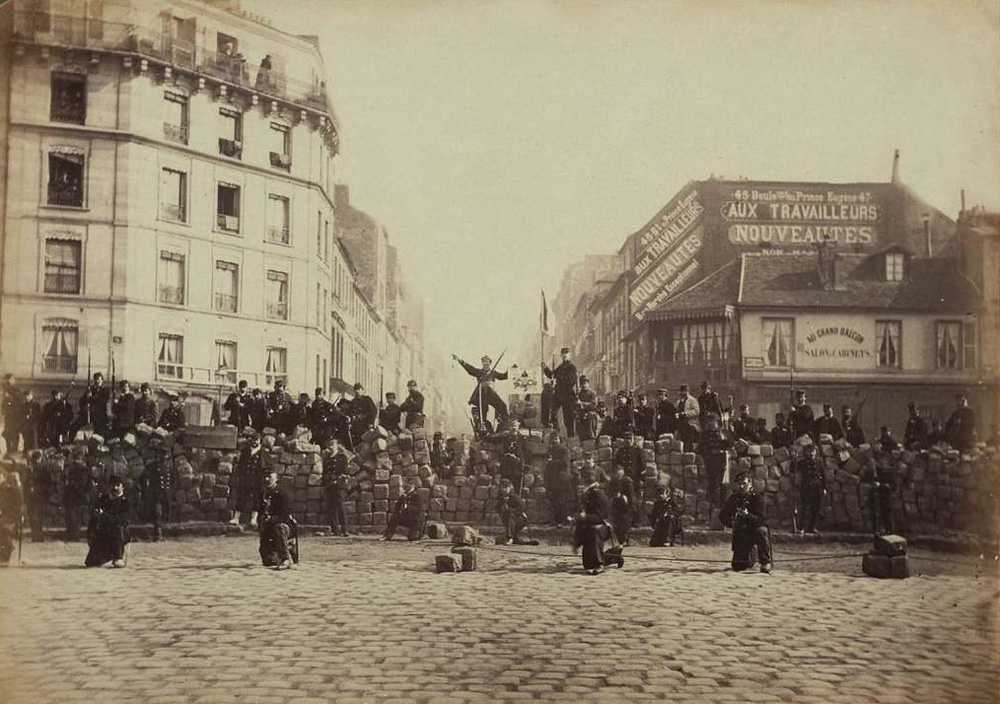
Moreover, the majority of elections are for the legislature, which handles the general case of laws. However, the business of states is concerned not with generalities but specifics. Congress may pass a law that sets broad policy goals for environmental regulation, which is then entrusted to narrow enforcement by an unaccountable, underfunded department of state managers. All the details of what the state managers of the different departments do is divorced from what any of us have to say about how different aspects of our society should look.
The same is true of the decisions of the numerous summits convened all around the world that make major international decisions about war, trade, economic policy, and, crucially, climate catastrophe. All of these summits and G8-9-10-11-12 meetings make huge geopolitical decisions with massive ramifications for working people. These all occur without even the pretense of democratic accountability. On top of that, the vast majority of the state, including the repressive apparatuses of the army, police, and much of the carceral system, is not elected, and we have next to no control over them.29Lastly, but most importantly, in the place where most of us spend the majority of our waking time—at work—we have absolutely no democracy. We have no control over our workplaces or working conditions, though maybe, if you are lucky enough to have a fighting union, you can negotiate over the terms of your exploitation.
Having democratic control over our world, our labor, and the fruits thereof requires a completely different type of social organization than the one historically constructed and reproduced by capitalism. The capitalist state in the form of bourgeois democracy—which is the form in most of the dominant capitalist countries—was considered by Marx and company as the “most stable form of government for capitalism” precisely because of the illusion of democratic control. Straight-up military dictatorships are expensive to maintain and historically are notoriously brittle, as there is little ideological cover that can serve as a buffer of class anger against state violence and inequality. Additionally, dictatorial forms of the capitalist state (military rule, Bonapartist civilian dictatorships, fascism) require the capitalist class to give up their direct representation in the state and hand the running of the state institutions to forces without “organic” ties to capital. Given these facts, Lenin’s words still ring true:
Bourgeois democracy, although a great historical advance in comparison with medievalism, always remains, and under capitalism is bound to remain, restricted, truncated, false and hypocritical, a paradise for the rich and a snare and deception for the exploited.30
The fact that capitalist “democracy” is more democratic than feudalism or dictatorship doesn’t mean that the democracy afforded can deliver liberation.
Abolition as creative destruction
In the dominant capitalist countries, some semblance of democratic control provides cover for a more fundamental lack of control in our lives. It is the product of the state’s function, which is not a manifestation of the “will of the people,” as liberals articulate, but a special organization designed to instill market order and to manage class antagonism—defuse it if possible, crush resistance if not. “Resistance,” to quote Amílcar Cabral, is “to destroy something, in order to build something new.” 31
The “breaking apart” of the state is an act that is not purely destructive. “Abolition,” as Ruth Wilson Gilmore tells us, “is about presence, not absence. It’s about building life-affirming institutions.” 32 We get to these life-affirming institutions by replacing the state and its charade of representative democracy with organs of direct democracy and self-government. Self-government is the antithesis of the capitalist state’s violent rule over and above working people’s communities on behalf of capital. The Russian revolutionary Leon Trotsky wrote that “the most indubitable feature of a revolution is the direct interference of the masses in historical events.” The entry of the masses of people into their own self-government means breaking open the channels that previously constrained their choice and self-determination.
One recent example of the creative process of breaking apart previous channels of control is that of the resistance committees in Sudan. In the midst of a immense wave of protest, general strikes, sit-ins (qiada), and civil disobedience that eventually overthrew the twenty-six-year rule of president Omar al-Bashir, neighborhood-based committees formed to organize, plan, and support the daily protests against the security apparatus of the Sudanese state.33During this time of social instability, the resistance committees also played a role in the disbursement of aid and supplies.
After the fall of Bashir and the beginning of a fragile power-sharing agreement between the military and the civilian opposition, the resistance committees took a more prominent political role and “evolved into the voice of the ignored masses and organized repeated protests” that culminated in successful resistance to the military’s attempted coup of the civilian government in October 2021.34
Then, in the winter and spring of 2022, the resistance committees convened a period of discussion where these organizations—formed to provide logistical and organizational support to a wave of protest—took on the creation of a series of political charters. Under the slogan of “No negotiations, no partnership, and no legitimacy for the military,” several political visions were outlined for what a new civilian state would look like in what Sudanese activist-scholar Muzan Alneel calls a “roadmap of a government built-from-below.”35In July 2022, the head of the military announced that the military would turn over executive functions to the civilian forces and resistance committees. While Sudan’s revolutionaries are rightfully skeptical of this actually happening and have opposed the subsequent “deals” made by the military, the general trajectory of the processes in which ordinary people “directly interfere” in historical events through experiments of self-government are reflected in the still ongoing events in Sudan.36
Direct control from below looks very different from a repurposing of the current state. The capitalist state is premised on divorcing power and politics from the masses. To win socialism we need to bring all power to (and thus from) the masses. We don’t need the “right people” in the Department of Education dictating school policy, we need teachers in democratic control of their schools. We don’t need “union-friendly” bureaucrats in control of the Department of Labor, we need worker control of production. We don’t need community control of the police, we need police abolished, jails leveled, and borders opened. This may seem like a chaotic process, but it is actually one that requires a great deal of organization, collective confidence, and combativity of our class, and that is precisely why the action of breaking apart is tremendously creative.
To be clear, no one is saying smash the public schools, or abolish the post office, tear up the roads and social security. But we are saying these and the rest of society can be freed up from the constraints of the old state; they can receive a greater breath of life by being directly and democratically managed by workers themselves.
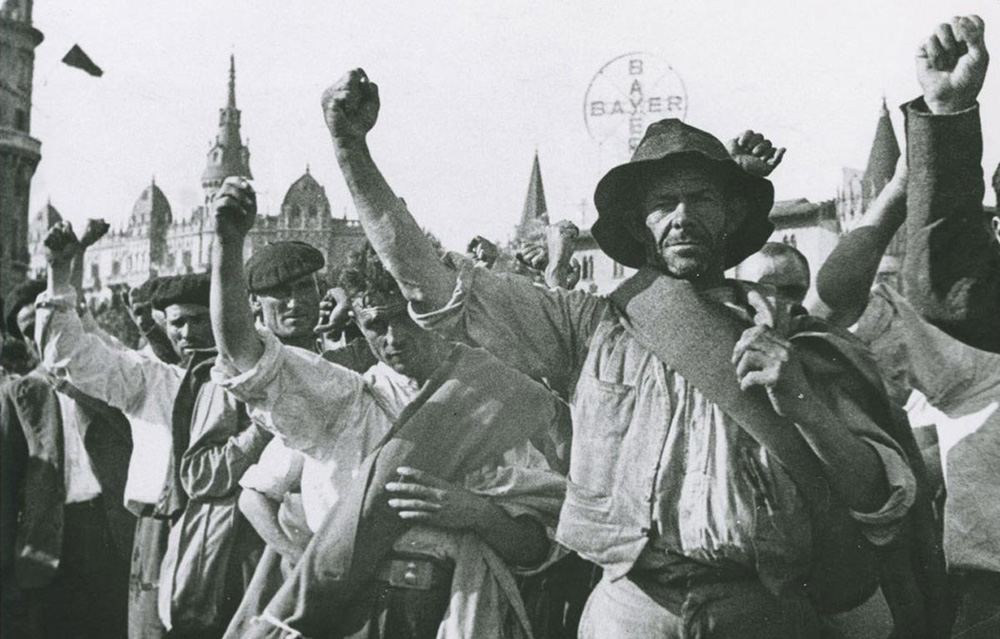
We see snippets of this creativity arise in periods of mass struggle, seen in protest tactics and organizational forms such as the mutual aid that sprung up during the pandemic and the protest waves that surged forward in 2020. The councils and assemblies that have bloomed in public life during mass struggle can be and have been the forms that manage society.37There have been scores of examples in history of mass struggles around immediate demands blossoming into experiments in councils and committees or organs of mass control of society, such as in Russia in 1917; Germany, 1918–23; Spain, 1936–37; Hungary 1956; Shanghai, 1967; Poland, 1980–81; France, 1968; Chile, 1970–73; Portugal, 1974–75; Iran, 1979–80; the popular assemblies of Oaxaca, Mexico, in 2006, in the revolutionary squares of the Arab Spring in 2011, and elsewhere.
We know that ordinary people are capable of organizing to meet our own needs because working people are already doing it in their workplaces and in their communities. Imagine if our mutual aid groups, strike councils, seized workplaces, neighborhood committees, and popular assemblies were organized on such a scale that they could take up the functioning of all of society. Reaching that powerful height—a situation sometimes described as “dual power”—brings the question of power, or “who actually rules,” onto the table. But dual power itself is not the goal, the goal is to be organized enough to resolve the question of power by smashing and replacing the state. That kind of organization can only be built through mass participation in lived struggle. The political education provided by collective action—politically, theoretically, and ideologically—is crucial. For masses of ordinary people, wrote Lenin, “only struggle discloses to it the magnitude of its own power, widens its horizon, enhances its abilities, clarifies its mind, forges its will.”38Struggle is the preparation for self-rule.
While this revolutionary shift may not be on the immediate agenda and thus currently involves a degree of abstraction, we must be clear that our side taking power will always put us up against the state, making revolution required and necessary. The capitalist state will be a key hurdle, and its abolition is the precondition for enacting a socialist transition from below.
Against utopian incrementalism
There is a recently revived tendency of thought in the socialist movement, which I will call utopian incrementalism, that argues against the possibility and desirability of confronting the state. The premise of this position is that socialism is constructed by doing the following: First, we build movements for reforms with far-reaching appeal in the hope that we are building broad support for socialism. Usually these reforms are designed around some kind of legislation, often written by an NGO or lobbyist organization, to try to get it passed through Congress. But in order to get those reforms passed, sympathetic legislators are required. The best versions of this position are clear about building a mass movement, but the mass movement, the activity of people in struggle, is seen merely as a useful tool to apply pressure through demonstrations and the like on the politicians who would try to get the legislation passed. In this line of thinking, democratic self-organization and mass militancy have to be contained in favor of such pressure movements. They become bureaucratized and always stay within the limits of legality for fear of alienating their allied elected officials. Accordingly, shortcuts like running candidates in capitalist political parties are often utilized. The point of a mass movement, in this conception, is reduced to a pressure campaign to get socialist politicians elected, which advocates of this position see as an end in itself, a “win” of the movement that comes to replace the material changes that were initially the goal.
The goal here is to incrementally accumulate electoral victories in order to win a majority in Congress (maybe the presidency, too, but this is unclear).39Then the socialist movement perhaps can try to make moves to nationalize key industries. The worst of these positions believes a fantasy story that socialist laws can be passed that change the institutional structure of capitalism, and that out of respect for the legality of the state, the army and the police would remain loyal to the socialist-run state. The capitalists are outfoxed by our clever strategy and, voilá, we have something they call socialism. Usually they are content with just some nationalization and a modicum of central planning.40This is a pure reformism, in that it believes that the capitalist mode of production can be fixed from within.
The more savvy of these positions are those articulated by someone like the early twentieth-century German socialist Karl Kautsky and repeated by some of those who, fairly dogmatically, hold these positions today. There is usually some acknowledgment that there will be some kind of attempt by the capitalist class to stop this hypothetical socialist majority government. People like Kautsky sometimes allude to a sort of “final test of strength” or “decisive battle” that presumably is exemplified by a mass defense against a capitalist-led coup of this hypothetical socialist majority government. For them, this “final test” is always ill-defined. Revolution is not on the agenda anytime soon they say, so let’s not talk about it.
Marx and Engels were clear in rejecting this parliamentary road to socialism. To quote just one example from Engels: “I have never said the socialist party will become the majority and then proceed to take power. On the contrary, I have expressly said that the odds are ten to one that our rulers, well before that point arrives, will use violence against us, and this would shift us from the terrain of majority to the terrain of revolution.”41
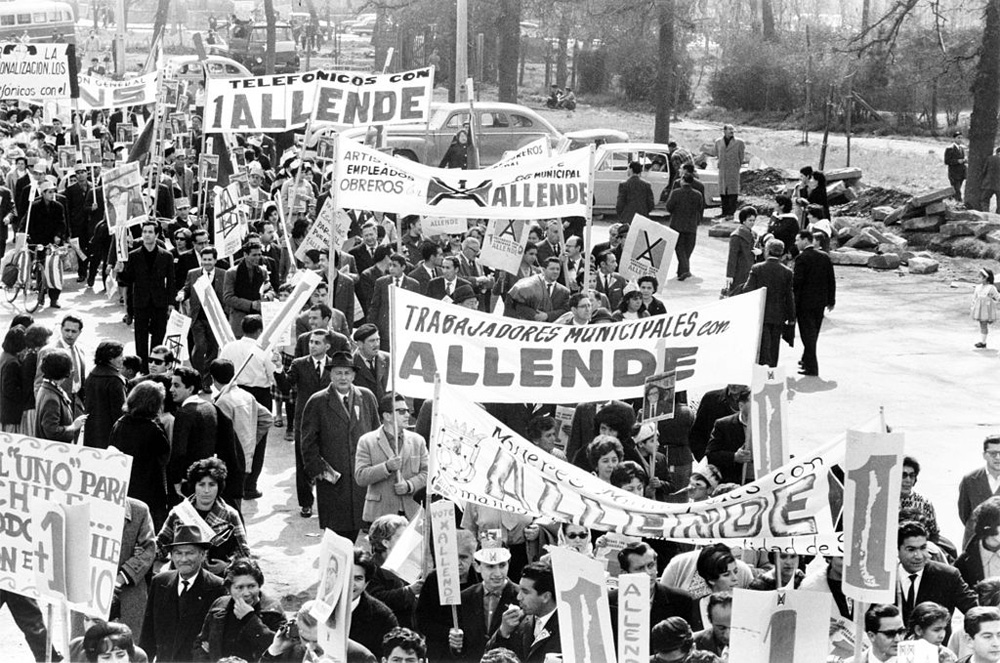
There are two main critiques of this more savvy approach to the parliamentary road to power. The first is about its gradualism, and the second is on the question of revolution. As I described before, the functioning of the state relies on taxes and investment, which means that the question of crisis also figures into the struggle for reforms. When capitalism is booming, reforms are easier to apply, but when capitalism is in an economic downturn, immense pressure is exerted to roll back reforms in attempts to stimulate capitalist investment. This puts the hypothetical majority-socialist government in a tremendous bind: do they restrain and demobilize their supporters’ hopes and demands as they strike and protest in order to preserve the reforms, or do they promote further radicalization and thus provoke direct confrontation with the capitalist class? The track record of this type of experiment in using the state in this way is extremely poor. Past attempts have always taken the restraint option, as the direct confrontation would entail rupture of the state. A few of the many examples:
Chile in 1973: Socialist Salvador Allende won election to the presidency and laid out the Chilean Road to Socialism, a program of reforms, nationalizing the copper mines, increasing wages, and decreasing unemployment. But he pledged to keep the state intact and brought the military, including a general named Augusto Pinochet into his government. Attempted nationalizations were met with strong resistance from capital. Despite the fact that the working class was militant and organized, a U.S.-backed coup by Pinochet smashed the government and resulted in mass executions of leftists, including Allende.
France in 1981: François Mitterand once said: “Reform or revolution? I want to say . . . yes, revolution. And I would immediately point out … the daily struggle for structural reforms can be revolutionary in nature.” Mitterand won the 1981 elections based on a unity of the Socialist Party and the French Communist Party. Workers were jubilant and partied in the streets with joy. Mitterand outlawed the death penalty, nationalized major industries, and nationalized 36 banks so that 90 percent of all deposits were held in nationalized banks. However, amid regional economic crisis, he was confronted by having to hold up unprofitable industries and while capitalist class put on pressure by refusing to invest. Just one year later he rolled back most of what he accomplished and began to administer austerity. By 1984, the neofascist National Front party went from being marginal to polling as high as the Communists.42
Sweden: Sweden had a left-wing socialist government—led by the Social-Democratic Workers Party (SAP)—from 1932 until 1976, and a left majority in parliament for all but nine years between 1932 and 2006. For the first three decades of the twentieth century, the Swedish working class went on strike more than that in any other European country.43By 1975 however, the tentative balance that the SAP had created with employers and workers began to tilt toward the employers, and the SAP lost power. While Sweden definitely has a higher living standard than the U.S., since the 1980s conditions have degraded because of neoliberalism and SAP’s program of class collaboration and pursuit of labor peace. 44Workers in Sweden, as of 2019, went on strike less than almost every other country in the world.45 As a result, a neo-Nazi party, the Swedish Democrats, won 20 percent of the vote in the national elections of September 2022 (the second largest share of votes by any party).
Greece in 2015: Syriza, a radical left coalition party that included some revolutionaries, won a majority in parliament fueled by a mass movement from below against the austerity measures imposed by the European Union.46Despite having a majority in parliament, an overwhelming referendum, and massive demonstrations for rejecting the austerity plan (called the Memorandum), Syriza capitulated to international finance and the Eurozone and carried out austerity—the very thing they had initially campaigned against.47In 2019 they lost elections and were replaced by the conservative New Democracy Party.
In short, the dilemma, to quote British socialist Ian Birchall, is that “to challenge the pursuit of profit makes reform impossible; but to leave profit unchallenged means that no significant progress can be made towards equality.”48
This challenge is underscored in the context of capital flight, one of the methods that capitalists use to exert pressure on reformists’ measures that directly challenge profit. In order to literally stop capital from fleeing, measures like nationalization of banks and forcible expropriation have to be escalated. This raises the stakes and makes a direct confrontation more likely than common social democratic measures like taxing the rich, but the logic of even small-scale reformism moves necessarily toward taking these measures.
The alternative to this conundrum would be to take steps to upend capitalist social relations, and that means upending private property. That path is not one that can be carried out within the bounds of a legality created and enforced by the capitalist state. Even if a reformist government sought to redistribute goods and resources more equitably, the state in the capitalist context has been formed by, is based upon, and reproduces capitalist social relations. The problem of capitalism is not a problem of distribution but of the social relation of private property held by the few forcing the many to trade their labor on the market in order to not starve. This is why there is a limit to nationalization through the legal courses of the state and why so many attempts to carry it out are met with either capital flight (they just take their money and leave or wait it out) or violent coups, in which the state is dissolved or taken over by forces friendlier to the capitalists.
Whither revolution?
The utopian incrementalists sequester the question of revolution as somehow being less relevant because it does not appear to be on the immediate agenda. This is either naïve, in that they underestimate its eventual crucial importance, or dishonest, in that they actually don’t think revolution is possible or desirable. Tyler Zimmer, in an article responding to this very assertion by Vivek Chibber, argues:
If a goal [like revolution] is simply not worth pursuing, then it’s hardly worth debating which strategies might best enable us to achieve it. Likewise, if a goal—however desirable it might be in itself—is impossible to achieve, or at any rate so far-fetched as to be totally unrealistic even in the long run, it’s unworthy of serious consideration now or in the future. But, on the other hand, if a goal [like revolution] is desirable and feasible in the long run, but impossible to achieve in the short run, it seems extremely unwise to push it to the side and dismiss it as irrelevant to those organizing in the here and now.49
It is not just unwise to avoid this question, but disastrous. Counterrevolution has been a predictable historical reaction in any country where a left-wing movement has made serious inroads toward reshaping the economy and against existing political power structures. State bodies like the CIA and the military brass are not neutral actors, and the bounds of “legality” will not protect movements and individuals from a counterrevolutionary backlash intent on defending the fundamental interests of capitalism. The sheer size and development of the contemporary states’ military wings mean that any socialist project will confront massive challenges to being realized. But to shrink from the challenges because they are too large does nothing to actually prepare for overcoming obstacles we know are an inevitable response to successfully implementing a project of liberation.
Fortunately, that daunting obstacle is not something we must confront alone, as we are. No guerrilla-style armed struggle has any hope of success in a military campaign against the repressive state in this country right now, and that is not what revolution will rely on. Instead, any revolutionary process involves masses of people, and the source of the movement’s power is its ability to shut down society through workplace strikes, street mobilizations, and protecting ourselves and our communities. Defending the gains made by a socialist or abolitionist movement, our own side’s institutions and communities, will also mean self-defense against ruling-class backlash and targeted repression. Counterrevolution will not be defeated without destroying the means for counterrevolution to be carried out. Doing that means breaking apart the state, the repressive apparatuses, and seizing the means of production. Those tasks can only be “called socialist revolution and it cannot be accompanied by any respect for private property or servility to bourgeois legality.”50

If we are serious about building life outside of capitalism, we cannot avoid the tough questions. We have to take responsibility for the future of the movement. If we are building a socialist movement—and an organization of revolutionaries—politically and organizationally unprepared for the moments of backlash or of the highest level of the class struggle, then we are setting up a generational effort for certain failure.
Being prepared for these heights of struggle has profound implications for our tasks in the here and now and how we conduct ourselves in the immediate struggle for reforms. Do we organize on the premise that gradual changes in the state structure are the path to winning socialism? Or do we see the need to organize in opposition to the state—even if we put forward socialist candidates to be a megaphone of social movements—anticipating moments of crisis, sparks of outrage and antagonism that can develop into windows of opportunity? A revolutionary strategy would attempt to always and everywhere “kindle the conflagration,” understanding that the best terrain for waging the class struggle is not in the marble sanctums of parliaments but in the disruptive, sometimes illegal activity of strikes, mass demonstrations, uprisings, and civil disobedience.51 As Italian communists Antonio Gramsci and Palmiro Toggliati put it in the 1920s, our organizing should:
link every demand to a revolutionary objective; make use of every partial struggle to teach the masses the need for general action and for insurrection against the reactionary rule of capital; and seek to ensure that every struggle of a limited character is prepared and led in such a way as to be able to lead to the mobilization of the proletariat, and not to their dispersal.52
The meaning of this approach becomes even more clear when examining arguments against the need to overcome capitalist states.
The reality of revolution
A common charge made by utopian incrementalists is that bourgeois democracy has legitimacy for the vast majority of working people.53Parliaments, they argue, are gains won by working class people and thus should be defended.54The first thing to say about this is that it is a wild historical inaccuracy.55Universal suffrage—the right to vote (as limited as it still is) was a demand won by the working class, but parliaments were not. Parliaments predate capitalism. They existed as bodies to give representation to feudal lords in relation to the monarchy. What the capitalist revolutions, including those “from above,” achieved was parliamentary supremacy over the monarchy in key countries. In this context parliaments were designed to secure rule by the bourgeoisie or even implemented as pressure valves from above out of fears of rebellion from below.
It is also the case that the degree of legitimacy is often overstated. The notion that “the bourgeois state is legitimate in the eyes of the working class” is not so simple an assertion as it is made out to be by its contemporary advocates. While individuals like Vivek Chibber state as fact that the state has “infinitely greater legitimacy” [emphasis mine] now than a century before, and Eric Blanc simply asserts without explanation this self-same premise.56This central assumption of their argument distorts by simplifying the contradictory reality of working-class consciousness. While it is the case that the majority of working people are not determined socialists ready for revolution, to characterize their views of the system as approving or bestowing “legitimacy” misses the anger and polarization of the political present. To see this, we need only look at the approval rating of Congress, which in a Gallup poll from July of last year was at 7 percent. The same Gallup poll found that the average confidence levels in all political institutions were at a historic low.57Voter turnout, the clearest marker of participation in democratic institutions, is consistently less than half of the population.
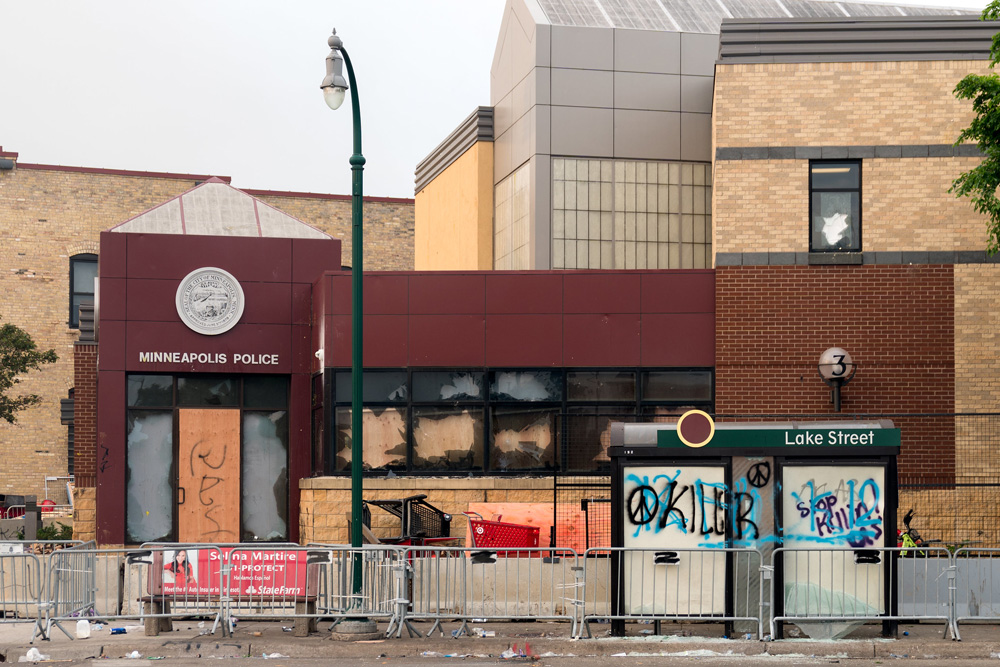
Heralding the supposed legitimacy of democratic institutions looks even more strange when we look at the scale of anger displayed frequently and visibly. Globally 2019 witnessed a massive wave of demonstrations of an antigovernment character, from Sudan to Hong Kong, Colombia, Chile, Algeria, and Haiti. The number of antigovernment demonstrations around the world in the 2010s increased annually by 12 percent. 58The surging wave finally found expression in the antiracist rebellion in the U.S. after the murder of George Floyd and Breonna Taylor in 2020. While the protests raged, a Newsweek poll found that a majority of Americans were in favor of the burning down of a Minneapolis police station.59
At the time the approval rating of that insurrectionary act was more favorable than either presidential candidate of the two capitalist parties.60Several comprehensive studies of trends in worldwide social movements from 2006 to 2020 found that global protests have steadily increased and have, by size and frequency, eclipsed past historical waves of protest in the postwar period.61
Additionally, since 2016 the demands of the protests have moved from single-issue demands to, as Ortiz, Burke, Berrada, and Cortés conclude, “‘omnibus protests,’ (protesting on multiple issues) against the political and economic system. Polls world-wide reflect dissatisfaction with democracies and lack of trust in governments.”
Compare this with Eric Blanc’s argument that: “The overwhelming historic experience is that, whether we like it or not, working people will try to use the existing institutions of political democracy under capitalism to further their interests and to transform society.”62It is nonsense to argue that the global trend in massive demonstrations, of marches of millions, pushing back police, building barricades, of self-sacrificing riot, hurling back rocks and tear gas canisters in self-defense, and braving nights of smoke and fire can be described as “using the existing institutions of political democracy.”
Rather, working-class consciousness is contradictory: the politics of reformism are still dominant even while people are also dissatisfied, disgruntled, and raging against it. In this equation, the legitimacy of reformism and the state is not a fixed reality to be catered to, but a challenge to be overcome.
In this context it is crucial we ask how we as revolutionaries approach the work of building movements. Do we stoke support for liberal democracy and the status quo and reinforce the legitimacy of the system, or do we try to fuel the fire of intense dissatisfaction and say, “Yes the system is rotten, it cannot save you, and it has to be abolished.” These are different tasks because, as Rosa Luxemburg pointed out, they are actually “different goals.”63
The need for revolution is not a dogmatic line or something we can convince people of by standing on a corner and shouting about it. It is a historical fact, and it is a process. People change their mind first and foremost by participating in struggle, and also by having revolutionaries in struggle patiently connecting the immediate task of the day to the final need for socialist revolution. Neither spontaneous protest nor revolutionary propaganda will advance a revolutionary movement in the absence of the other.

Working people are capable and deserving of being more than just passive props for the political aspirations of candidates in the same old capitalist system. We can take up the struggle ourselves, in our workplaces, neighborhoods, and in the streets. We can make decisions collectively and democratically based not on profitability, but on what we need and the future we decide to create. There is an old adage attributed to Lenin, that goes: “There are decades when nothing happens, but then there are weeks when decades happen.” As the Sudanese comrade and revolutionary Muzan Alneel said recently, when speaking of experiences in the contemporary Sudanese revolution, “These aren’t just pretty words, this actually happens.”64
Our hope lies unshakably in the tremendous creativity of people in struggle. What seemed impossible yesterday can rapidly shift to be considered what is necessary today. Nowhere is this process more crucial than in the question of capitalist states. The historically grounded need to smash the state to achieve liberation cannot be reduced to an intellectual abstraction or a chic radical shibboleth. Smashing the state is, rather, the only realistic approach of a serious revolutionary project. The existence of the capitalist state “is incompatible with the development of socialism,” as Colin Barker pointed out. 65To prepare a revolutionary socialist movement to be fit for its historic task, we need clarity among the militant workers, activists, and rebels involved in the fights of today. Sharp political crises, struggle, and revolutionary situations are inevitable under capitalism; our side’s victory is not. The possibility for a liberated future will only be built from the rubble of capitalist states.
Special thanks to Sean Larson, Charlie Post, and David Whitehouse for reading and providing insightful suggestions on this article.
Featured Image credit: Nevena Pilipovic-Wengler.
Categories
We want to hear what you think. Contact us at editors@tempestmag.org. And if you've enjoyed what you've read, please consider donating to support our work:
Donatebrian bean View All
brian bean is a socialist organizer and writer based in Chicago, a member of the Tempest Collective, a part of the Rampant Magazine editorial collective, and an editor and contributor to the book Palestine: A Socialist Introduction from Haymarket Books.
